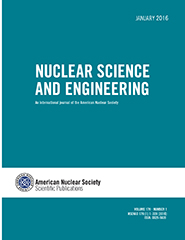Nuclear Reactors 739 - Research Team Pioneers New Safety System For Light Water Reactors - Part 2 of 2 Par
Part 2 of 2 Parts
Part of the team’s proposal includes the formation of an Emergency Rescue Team (ERT) that would consist of a group of highly trained and specialized rescuers. The ERT would have specialized machinery and equipment. They would have access to every nuclear power reactor installed in an assigned area. The intention is to have the ERT be able to reach any of its assigned reactors within and hour and/or be able to execute a remote shut down of the reactor experience difficulties.
In their report, the team explains how and why the features of their new system could have prevented core meltdowns and the resulting nuclear disasters for each of the three major nuclear accidents listed above.
The Three Mile Island nuclear disaster was the most devastating accident in the history of U.S. nuclear power plants. The accident was ultimately found to be the result of a series of typical failures that combined to cause the disaster. If the operators of Three Mile Island had access to an alarm from the E-SMD detectors, an emergency shutdown of the reactor could have been carried out well before the events that led to the disaster.
The Chernobyl accident in Ukraine was the result of critical errors on the part of the staff at the power plant. If the proposed ERT had been available, they could have executed a remoted control shutdown. The intervention of military units might have prevented the catastrophe that resulted from the human errors.
With the flooding of the emergency generators at Fukushima, the flow of cooling water to the reactors was lost which resulted in the meltdown of Units 1, 2 and 3 as well as the explosive destruction of Unit 4. Alarms from E-SMD detectors and quick response from the EFT could have prevent the destruction of the Fukushima nuclear power plant.
The report states that while there have be three notorious major nuclear plant accidents, there have been about five hundred safely operated nuclear power plants since controlled fission was first demonstration in 1942 and the connection of the first nuclear fission power reactor to the U.S. electrical grid in 1954. In addition, there have been a few thousand accident-free reactors utilized for purposes other than the generation of electricity. These specialized reactors were dedicated to such uses as research, nuclear isotope production and marine propulsion.
In conclusion, the authors of the report state that “The industry and/or the Government of responsible Countries where applicable, become the main players for the possible implementation of the ideas in this paper. A strategy is needed in this connection: academia and research institutes willing to be engaged into practical applications of the nuclear technology should become actors.”
The intentions of the research team are admirable. We have about four hundred nuclear power reactors currently operating around the world. Anything that can make them safer would be very important. However, the bigger problem is than no matter how good nuclear power reactor safety is, there is still the possibility that there will be another major nuclear accident. It is probable that one more major accident will turn public opinion, political support and investor interest against further expansion of nuclear power.
